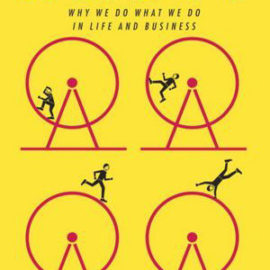Want to learn the ideas in This Is Your Brain On Music better than ever? Read the world’s #1 book summary of This Is Your Brain On Music by Daniel J. Levitin here.
Read a brief 1-Page Summary or watch video summaries curated by our expert team. Note: this book guide is not affiliated with or endorsed by the publisher or author, and we always encourage you to purchase and read the full book.
Video Summaries of This Is Your Brain On Music
We’ve scoured the Internet for the very best videos on This Is Your Brain On Music, from high-quality videos summaries to interviews or commentary by Daniel J. Levitin.
1-Page Summary of This Is Your Brain On Music
Overview
Throughout history, music has been a central part of human culture. It was used to tell stories and engage people in different cultures. The rise of modern neuroscience is shedding new light on the phenomenon that is music, and although there’s still much to discover about it, it’s clear – music is an integral part of our brain.
Music is an auditory phenomenon that produces a feeling of pleasure in the listener. It arises from the brain and has connections with memory. Musicians are sexy because they have musical talent.
In this article, you’ll learn what makes music unique from other sounds; why certain songs are so catchy and memorable; and how hearing that old song can bring back a lot of memories.
Big Idea #1: When basic elements of sound combine in a meaningful way, it gives rise to music.
What is music? While some people think that only classical music is real, other people are fans of Elvis Presley or Michael Jackson. So, can we come up with a definition for music?
Music is a combination of specific building blocks.
Music is different from random noise because it has distinct elements that create relationships with one another. The most important of these elements are pitch, rhythm, tempo, contour, timbre, loudness and reverberation. Pitch refers to the note being played; in “Mary Had a Little Lamb” there are seven notes before returning to the first one.
Rhythm is the duration of a sequence of notes. Tempo is how fast or slow something happens, and contour concerns the general shape of a melody—whether it rises or falls. Timbre distinguishes one instrument from another when they are playing the same note, and loudness refers to how much energy an instrument creates. Reverberation involves how far away we perceive sound to be coming from, or what size room it’s happening in.
When we combine all these attributes, they come together to form musical ideas. For example, melody is a combination of tone and rhythm arranged in a particular way.
Big Idea #2: Some think music exists because it gives us pleasure. But most theorists believe music has an evolutionary basis.
Where does music come from? That’s a simple question, but it has a complicated history of conflicting answers.
There are some scientists who believe that music is just a by-product of language, and it serves no real purpose. However, other experts disagree with them because they think that music has an evolutionary purpose, and if we lost it everything else would be fine too.
However, most cognitive psychologists researching music agree that it evolved because of its role in human cognition.
Music may have been a precursor to speech, and it could have also served as a way of showing off your physical fitness. Darwin made this argument about 150 years ago, saying that music is like the peacock’s tail—a sign of sexual fitness. To sing or dance well requires mental and physical prowess.
Musical ability also shows that you have the time to practice your skills. If you’re good at singing or dancing, it means that you have a lot of free time and food to eat.
Music has been around for a long time. It is likely that music served an evolutionary purpose and allowed people to communicate, find mates, and be more successful. Regardless of whether it serves an evolutionary purpose or not, music exists now and affects us on multiple levels in many ways. We’ll look at how music affects our brain in this article.
Big Idea #3: Processing music involves almost every region of the brain that we know of.
Modern-day technology has allowed scientists to discover certain parts of the brain that are responsible for processing music.





